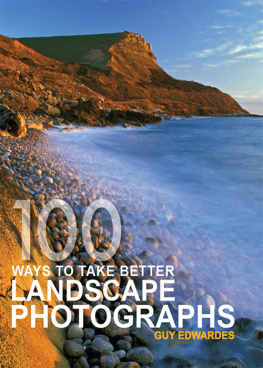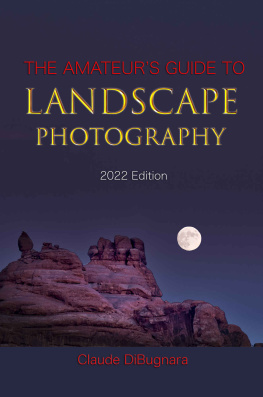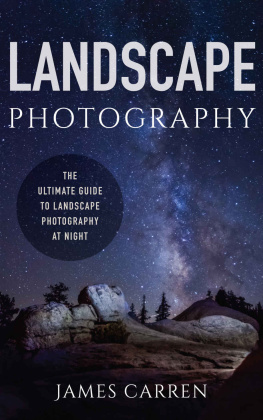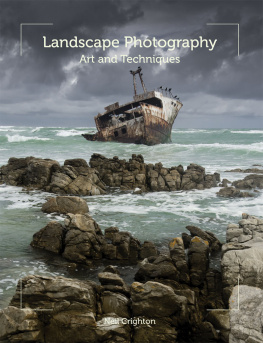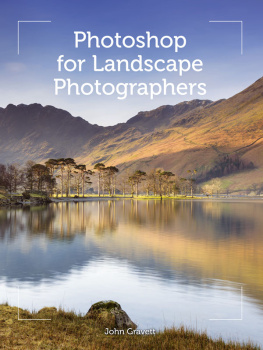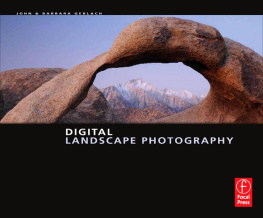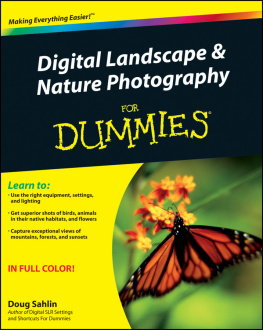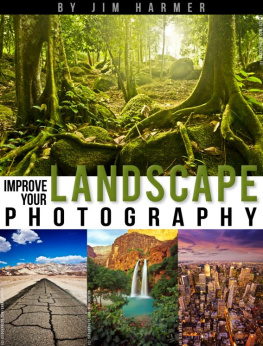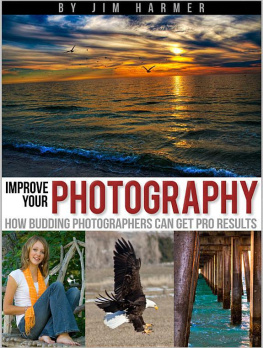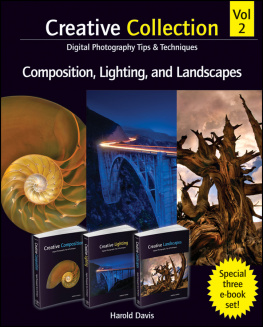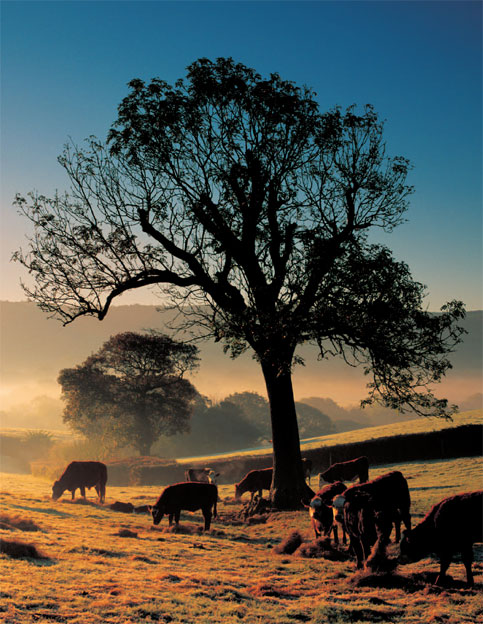
WAYS TO TAKE BETTER
LANDSCAPE
PHOTOGRAPHS
GUY EDWARDES

Introduction
Simply recording the landscape with a camera is easy, but to take great landscape photographs requires a totally different approach. In fact, landscapes are one of the most difficult subjects to capture successfully in a photograph. It isnt easy to catch the drama, depth, colour and atmosphere of a magnificent landscape scene, as these attributes, which make the scene so special at the time, can be lost in the photograph itself. Its not always a question of what to include in the composition; more often it is what to exclude in order to concentrate attention on the most important part of the scene before you.
Point and shoot photography will never produce consistently high quality results when photographing the landscape because image sharpness is critical, particularly if you intend to make large prints or to have your photographs published in fact, every image in this book was taken with the camera firmly supported either by a sturdy tripod or by a beanbag. A methodical approach is required, and a great deal of thought needs to be put into each composition. Too many landscape photographs are taken from the roadside or a well trodden path, often leading to duplicated and two-dimensional compositions.
This book will encourage you to spend a little more time on each shot, to step off the path, and to let your creativity steer you towards a more dynamic composition. The points covered apply to any camera format, and to both film and digital capture.
This book will encourage you to spend a little more time on each shot and to let your creativity steer you towards a more dynamic composition.
Starting with the fundamentals of good photographic technique, each chapter covers a different area of the genre, covering all the most commonly encountered situations and revealing the secrets of good landscape photography: how to recognize scenes with photographic potential and make the most of them with good composition and atmospheric lighting; the different approaches required for various inland and coastal landscape locations at different times of the day and the year; the relative merits of wideangle and telephoto lenses and the techniques required to get the best from both; and how to turn the textures, patterns and details abundant in the landscape into creative and original images.
Photography is a very subjective art, and in no way should this book be taken as a definitive guide on how you should photograph the landscape: as a landscape photographer you will need to develop your own ideas on what makes a successful image, and take time to consider exactly what makes a landscape photograph work for you. There is no better way to improve your skills than to get out into the countryside with your camera as often as possible. 100 Ways to Take Better Landscape Photographs provides a reference that I hope will help and inspire you to make striking, atmospheric and technically proficient landscape photographs on a consistent basis.
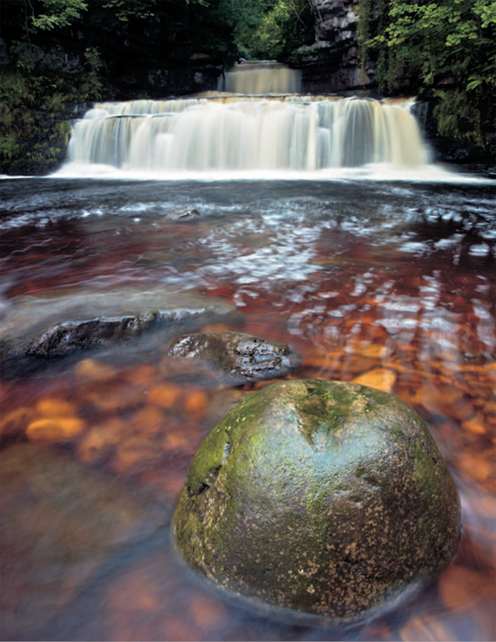
Landscape photography basics
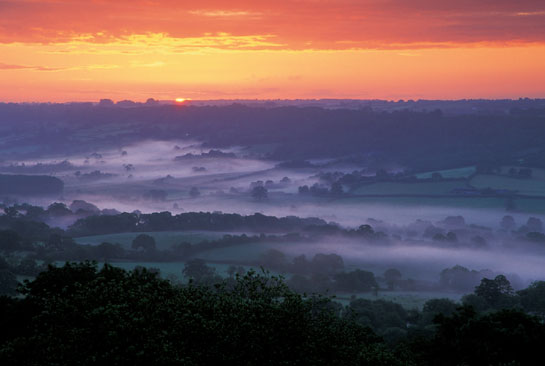
Keep your equipment portable
When travelling long distances on foot, it is best to keep your photographic kit as light and compact as possible, so that it neither hampers you nor deters you from traversing difficult ground. It is easy to be tempted into replacing or adding to your camera system with the very latest, and reportedly better, cameras, lenses and accessories. However, you should consider carefully how these upgrades and new items might benefit your photography, and whether they will help you to produce better images. They may very well provide little more than additional ballast to your camera bag! Good-quality modern zoom lenses can replace several prime lenses, saving both weight and cost without sacrificing image quality. However, as many landscape images require the use of a small aperture for sufficient front-to-back sharpness, heavy and expensive fast zoom lenses are both unnecessary and rather impractical.
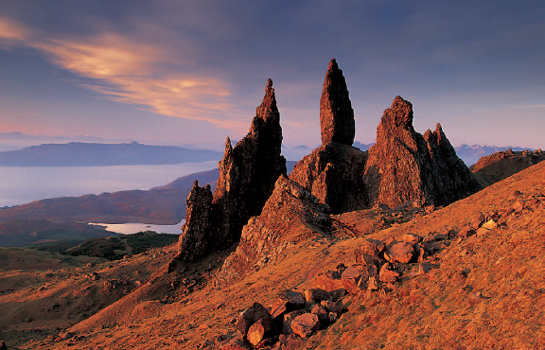
The Storr
When travelling longer distances by foot over rough ground, I take only a basic camera set-up. On this occasion, I had only one camera body, a wide-angle zoom lens and a telephoto zoom lens, a basic filter system, spare batteries, film and a carbon-fibre tripod. The total weight of a little over 6kg (13lb) meant that I wasnt deterred from climbing the steep 300m (1,000ft) ascent in pre-dawn light in order to reach the top of a rocky outcrop in the Scottish Highlands in time for sunrise. The backs of these rocky pinnacles on the Isle of Skye are lit by beautiful warm light only in early summer, when the sun rises at the easternmost point of its yearly cycle.
Canon EOS 5, 28105mm lens, polarizer filter, 1-stop neutral density graduated filter, Fujichrome Velvia, 1/2sec at f/11
Get to know your camera
It is surprising how many photographers are not totally familiar with the functions and operation of their camera. Landscape photography doesnt require a great many of the functions available on a modern SLR, but you must familiarize yourself with those that are necessary. Find out how to set the different metering modes, and learn how the metering system reacts to different lighting conditions. Set the custom functions that you might need and make a list of ones that you access regularly. Know how to replace the battery. Practise attaching the remote release and setting the camera up for long exposures. Learn how to set the mirror lock-up and self-timer function. Order your filters and adaptor rings in one easily accessed and well-labelled wallet. Memorizing these functions and procedures will help you to work quickly in order to catch moments of transient light. It will also allow you to work far more efficiently in low light situations.
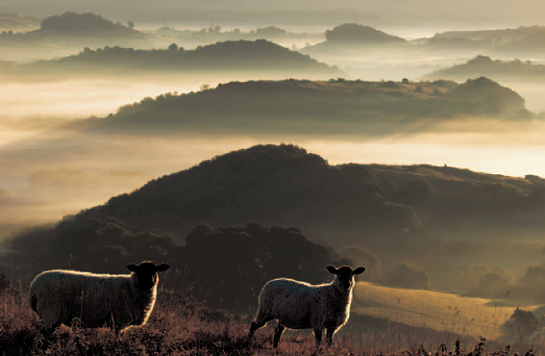
Inquisitive sheep
I was returning to my car after shooting a sunrise over this mist-filled valley when a flock of sheep ran along the ridge past me. The last two paused inquisitively against a wonderful backdrop. I hurriedly set my tripod down and changed to a longer focal length lens, composed the scene, focused, metered the exposure, set an aperture small enough to record the background sharply, set mirror lock-up and self timer and hit the shutter. Without knowing exactly how to set the functions on my camera I would almost certainly have missed this shot as I managed to fire off only two frames before the sheep decided to catch up with the rest of the flock.
Canon EOS 1Ds, 70200mm lens, ISO 100, 1/30sec at f/22
Include a sense of scale
It is often essential, although not always easy, to illustrate scale in a landscape photograph. Take, for example, Californias Giant Sequoia forest: without including an easily recognizable object, it would be impossible to show just how massive these magnificent trees are in reality. The same is true of many other subjects towering cliffs, vast sandy beaches, waterfalls and the like. The easiest option may be to include a human figure within your composition. If this doesnt appeal to you, or if it simply isnt practical, then look for another easily recognizable object that will fit naturally within the scene perhaps a building, an animal or a plant. Whatever you use to illustrate scale must be placed close to the main subject, otherwise the effects of perspective may counteract your efforts. A wide-angle lens used close to a foreground element can exaggerate scale very effectively and will often result in a very dramatic and eye-catching image.

